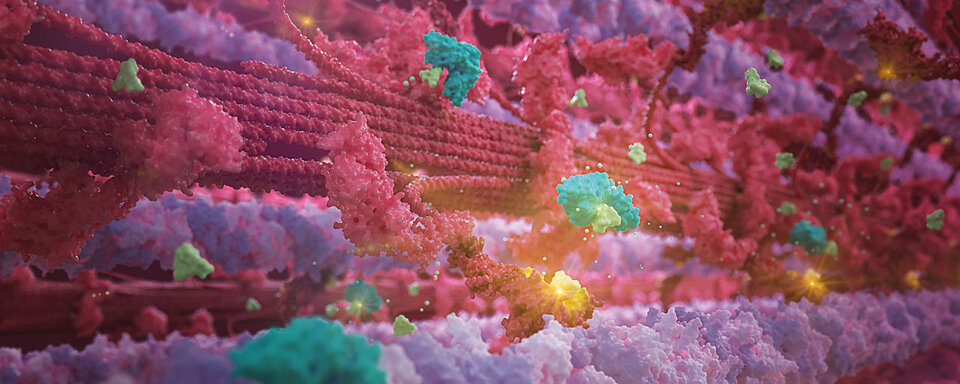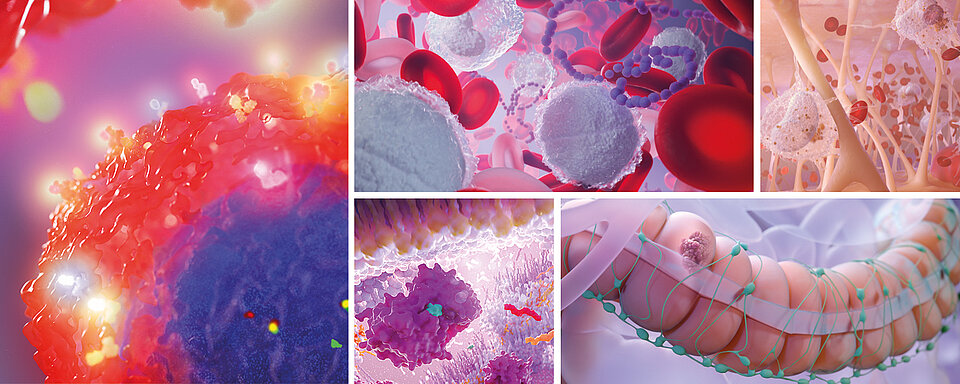Scientific Calendar February 2024
Exercise-induced muscle damage
What is the most common musculoskeletal stress marker measured in high-performance and elite sports to test exercise-induced muscle damage, often with the use of point-of-care testing (POCT) devices?
Aspartate aminotransferase (AST)
Alanine aminotransferase (ALT)
Lactate dehydrogenase (LDH)
Creatine kinase (CK)
Myoglobin (MB)
Congratulations!
That's the correct answer!
Sorry! That´s not completely correct!
Please try again
Sorry! That's not the correct answer!
Please try again
Notice
Please select at least one answer
Exercise-induced muscle damage
Multiple markers of exercise-induced muscle damage are used to evaluate and outline the extent and course of damage. The main blood marker for this is the creatine kinase (CK) value. Using capillary blood sampling as a minimally invasive procedure, it is easy to quantify the muscle injury.
Base levels of serum CK[1] in general populations are variable 35–175 U/L [2] with ranges from 20 to 16,000 U/L, and this wide range reflects the inconsistent occurrence of subclinical disorders and minor injury, genetic factors, physical activity status and medication [3].
In examples of rhabdomyolysis (clinically diagnosed muscle damage), CK levels have been found at 10,000–200,000 U/L and as high as 3 × 106 U/L [4]. Such levels clearly signal strong disturbance or disintegration of striated muscle tissue with concomitant leakage of intracellular muscle.
References for the question
[1] S. Achtzehn. et al. (2018): High-performance and elite sports. Springer-Verlag GmbH Germany, part of Springer Nature P. B. Luppa, R. Junker (Eds.), Point-of-Care Testing
[2] E.C. Lee et al. (2017): Biomarkers in sports and exercise: tracking health, performance, and recovery in athletes. Journal of Strength and Conditioning Research . Volume 31, Number 10
[3] Kyung-A Shin,et al. (2016): Comparison of Changes in Biochemical Markers for Skeletal Muscles, Hepatic Metabolism, and Renal Function after Three Types of Long-distance Runn Medicine. Volume 95, Number 20
[4] Baird MF. et al. (2012): Creatine-Kinase- and Exercise-Related Muscle Damage Implications for Muscle Performance and Recovery. Journal of Nutrition and Metabolism. Article ID 960363.
References
[1] Baird MF. et al. (2012): Creatine-Kinase- and Exercise-Related Muscle Damage Implications for Muscle Performance and Recovery. Journal of Nutrition and Metabolism. Article ID 960363.
[2] Gagliano M. et al. (2009): Low-intensity body building exercise induced rhabdomyolysis: a case report. Cases Journal. 2(1, article 7).
[3] Prelle A. et al. (2002): Retrospective study of a large population of patients with asymptomatic or minimally symptomatic raised serum creatine kinase levels. Journal of Neurology. 249(3):305–311.
[4] Efstratiadis G et al. (92007): Rhabdomyolysis updated. Hippokratia. 11(3):129–137.

